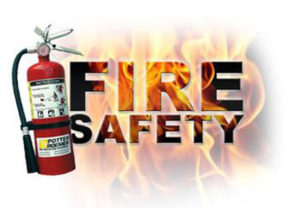Fire Safety
Introduction:
Fire Safety teaches participants the principles of fire prevention and fire safety and identifies appropriate responses in workplace situations involving fire. This course is designed for all employers and workers.
Course Objectives:
Ultimately, the goal of this course is to provide basic workplace fire safety principles, recognize the importance of having a fire safety plan and evacuation procedures, know the appropriate way to respond if there is a fire in the workplace, and to show the proper way to use a fire extinguisher.
Course Content:
This course is presented in 4 modules:
1. Introduction – Basic Workplace Fire Safety Awareness
2. Fire Safety and Prevention
3. Fire Extinguishers
4. Using the Fire Extinguisher
Evaluation:
At the end of each module, there is a test. Participants must successfully complete the test before continuing to the next module.
Participants that do not achieve 100% can review the module content and try as many times as necessary to advance and complete the course.
Test questions are randomly selected from a test bank, making each test unique.
Duration:
This online course is self-paced. Participants may leave the course at anytime and can resume where they left off. The duration will depend on the individual participant and their prior knowledge of the subject matter. On average, the timeline for completion will be 2 - 4 hours.
Take-home materials:
Upon successfully completing all modules, there is a printable certificate for your records.
Fire Safety Tips
House fires are one of the most common emergencies experienced by Canadians in their home - and many of these fires occur in the winter months. Taking proper precautions can help prevent fires, and can help keep you and your family safe in the event of a house fire. Here are some tips to help:
- Keep anything that can catch fire, like clothes, towels, and oven mitts away from the stove
- Keep items that can catch fire at least three feet away from heat sources such as space heaters
- Never leave candles unattended and use a deep, wide holder when they are lit
- Christmas trees can be especially flammable, especially when they dry out. Make sure you regularly water a Christmas tree, and use approved lights that will not overheat
- Never smoke in bed
- Talk to children about the dangers of fire and keep matches and lighters out of reach
Even when precautions are taken, house fires can still happen, so it’s important to plan ahead:
- Create a plan with your family and practice it
- Review all possible exits
- Know who will be in charge of assisting family members who will need help, such as small children or elderly family members
- Pick a spot outside for your family to meet
- Install smoke alarms and carbon monoxide detectors on every level of your home. Be sure to test them once a month, and replace the batteries at daylight savings time in March and November
- Make sure everyone knows the sound of the alarms, and what to do if they hear them
- Learn fire safety – take a moment to practice STOP, DROP AND ROLL in case anyone catches on fire
Knowing the risks, making a plan and having a kit can help your family be ready. In the event your experience a house fire it’s important to remember:
- Follow your escape plan. Get out and stay out
- Call for help from a neighbour’s house
- Crawl under smoke when exiting
- If smoke, heat or flames block your exit, stay in the room with the doors closed. Place a wet towel under the door and call 911 – signal for help by waving a brightly coloured cloth or a flashlight through a window
- Do not open a door if it the handle is hot



